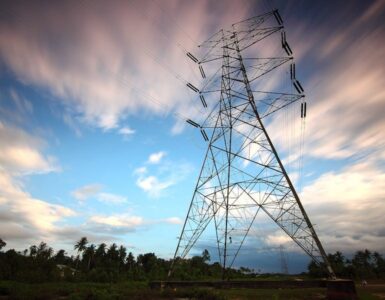Students are heading back to school, fall football practice is underway with games kicking off soon. Years ago, I recall watching an opening week college football game—the underdog pulled a big upset and their fans stormed the field in jubilant celebration. The team’s head coach body surfed around the field before being deposited in front of a television reporter who was waiting with a microphone and her camera crew. The reporter yelled a question to the coach who smiled with a maniacal grin amid a mosh pit of crazed supporters. “They said we couldn’t do it,” the coach replied to the question he may not have heard over the din of the crowd. “They said we couldn’t do it! WHAT WILL THEY SAY NOW?”
That once obscure coach, Dabo Swinney, has now won multiple college football national championships. I often think of this jubilant scene when looking at how Arizona won their own national championship of K-12 academic improvement. Arizona is on what is thought to be the wrong international border to be doing well on academics, but we didn’t get the memo and did it anyway. Alas some tend to evaluate Arizona’s academic gains in a similar fashion to Jerry Seinfeld’s evaluation of dates—they have man hands, or you know something.
If you stretch the national academic data back as far as they go (1990) Alabama consistently had the lowest scores and Arizona was second to last. Since 1990 Arizona’s population has doubled, our K-12 student body went from majority-White to majority-minority and our average level of academic achievement improved substantially across every subgroup and overall. Like for instance the trend for free and reduced lunch eligible students:

The National Assessment of Educational Progress recently put out a brief study about Arizona’s gains, which was very nice to see. I’m afraid however that they missed the elephant in the room in terms of likely drivers of the improvement. We never know what policy or non-policy factors drive trends in academic scores (many things going on at once) but the National Assessment piece focused on assessment and testing changes.
The change in standards and testing may have indeed played a role, but Arizona students had become the only state to show statistically significant gains on all six NAEP exams given between 2009 and 2015. The average among the other 49 states during this period was approximately one net improvement. The AzMERIT debuted in 2015, shortly after students would have taken the 2015 NAEP. Moreover, most states changed their standards and tests during this period, but as seen in the figure above they didn’t see Arizona levels of improvement. Testing changes in the short seem to be an implausible primary driver of improvement.
Bob Robb, the dean of Arizona political analysts laid out the case for choice as a driver of systemic improvement in a recent column:
The theory behind school choice is that competition for students will drive improved performance in all schools. The evidence in support of that has been thin because the existence of competition has been limited.
The following is at least plausible if not probable. Arizona is the first state in the union in which competition for students became broad enough to test the theory. And it is not just increased enrollment in charter schools. Arizona has open enrollment between district schools, which is widely availed.
And, so far, the Arizona experience suggests that the school choice theory is working,
There are those taking aim at the multiple-site charter school systems that have been so successful in attracting students in Arizona, with a goal of largely reducing charter schools to standalone mom-and-pop operations.
It would be ironic, and tragic, if Arizona, having finally achieved scale in educational competition, and having experienced notable improvements in student learning, were to decide to shut it down.
If you can imagine Clemson fans wanting to fire Coach Dabo because he eats his peas one at a time, you might get a sense of some of the misplaced priorities in Arizona’s K-12 conversation. We are making an $11.5 billion investment in public education in order to give each student the opportunity to acquire the knowledge, skills and character necessary for success in life and to exercise the responsibilities of citizenship. There is far more of this happening now than in the past, and the future can be brighter still. Arizona’s gains are real, and they’re spectacular.
















Add comment